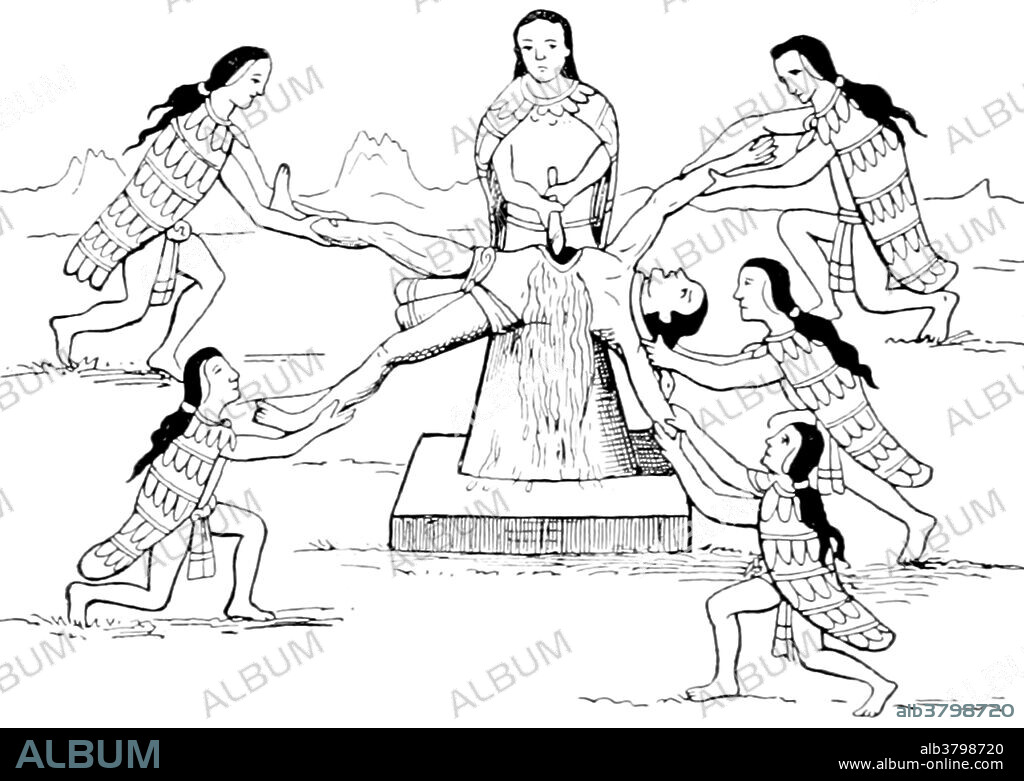alb3798720
Human Sacrifice, Pre-Columbian

|
Añadir a otro lightbox |
|
Añadir a otro lightbox |



¿Ya tienes cuenta? Iniciar sesión
¿No tienes cuenta? Regístrate
Compra esta imagen

Título:
Human Sacrifice, Pre-Columbian
Descripción:
Ver traducción automática
Human sacrifice was a religious practice characteristic of pre-Columbian Aztec civilization, as well as of other mesoamerican civilizations such as the Maya and the Zapotec. The Aztecs had 18 months in one cycle, and for each of the 18 months there was ritual sacrifice. The victim would be painted as a part of the ritual, they would be placed on a slab where their heart would be removed and held up to the sun. The body would be thrown down the stairs of the temple, the limbs were removed and later cooked. It's estimated that 20,000 humans were sacrificed by the Aztecs every year. Image taken from page 32 of "Kulturgeschichte Vierte Auflage" by Friedrich Anto Heller von Hellwald, 1896.
Crédito:
Album / Science Source / British Library
Autorizaciones:
Modelo: No - Propiedad: No
¿Preguntas relacionadas con los derechos?
¿Preguntas relacionadas con los derechos?
Tamaño imagen:
4350 x 3091 px | 38.5 MB
Tamaño impresión:
36.8 x 26.2 cm | 14.5 x 10.3 in (300 dpi)
Palabras clave:
1896 • AMERICA CENTRAL • ARTE PRIMITIVO • ARTE • AÑOS 1890 • BLANCO Y NEGRO • CIVILIZACION ANTIGUA • CULTURA ANTIGUA • CURA • DIBUJO • FAMOSA • FAMOSO • HISTORIA • HISTORICO • ILUSTRACION • IMPORTANTE • MESOAMERICA • OBRA DE ARTE • PIRAMIDE • PRACTICA RELIGIOSA • RITUAL RELIGIOSO • SACERDOTE • SACERDOTES • SACRIFICIO HUMANO • SIGLO XIX • TEMPLO
 Pinterest
Pinterest Twitter
Twitter Facebook
Facebook Copiar enlace
Copiar enlace Email
Email
